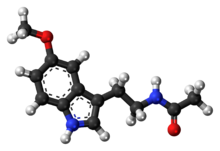Bonni Goldstein, MD, forwards this “very interesting” editorial from the January 2018 Journal of Applied Laboratory Medicine, “Medical Cannabis and Pain Management: How Might the Role of Cannabis Be Defined in Pain Medicine?” The authors, Amor Deshpande and Angela Mailis, are pain specialists based in Toronto. Very interesting, indeed. Excerpts follow with boldface showing our strong agreement.
With every passing day, the din surrounding the inappropriateness of cannabinoids in pain medicine grows quieter. While it would be remarkable to attribute this acquiescence to a growing body of robust supporting evidence, the reality is that the number and quality of clinical cannabinoid trials in pain medicine remain muted. Moreover, a significant portion of existing trials involve synthetic single-molecule cannabinoids rather than medical cannabis. A recent cursory PubMed literature search in May 2017 revealed approximately 12 randomized control trials published over the past 5 years contributing new evidence to this field. Over the same time span, the search identified an incredible 11 systematic reviews published in English all appraising similar sets or subsets of clinical trials on cannabinoids and pain. In short, the current clinical debate continues to be driven, in large part, by variable analyses and perspectives of the same extant clinical trials. Despite these limitations, systematic reviews in acute pain are unequivocal in pointing out the lack
of effectiveness of cannabinoids (1).In contrast, and maybe unsurprisingly, the reviews in chronic pain, mostly neuropathic, have all arrived at similar conclusions, that cannabinoids and medical cannabis provide small analgesic benefit, with a need for more high-quality trials with greater emphasis on concentration, dosing frequency, and delivery route (2). The latest systematic review does not depart from this mantra (3). Epidemiological studies also seem to be split, both supporting and refuting the benefits of cannabis to reinforce various positions. Earlier, well-publicized reviews summarized the findings of large cohorts clearly pointing to the potential negative effects looming ahead (4). The latest studies in this arena, however, intimate that recent trends in the use of cannabis may be associated with a decreased incidence of opioid mortality (5). Studies such as these have emboldened those in favor of prescribing cannabis as a means to promote harm reduction in pain management (6). Unfortunately, there appears to be no clear end in sight to this debate, at least as far as evidence is concerned. The time has come to stop reassessing the same set of trials, expecting this time that the evidence will be sufficient. Instead, greater efforts are required to answer more germane questions, such as what kind of quality original evidence could support the understanding of medical cannabis in pain and how will it best be captured?
…What is unquestionable at this stage is that patients are demanding change in the current paradigm of pharmacological pain management. While not a panacea, cannabis stands ready at the vanguard of precision pain medicine. As in many other industries, the public now has access to the tools, both political and technological, to move ahead. Disappointed patients, frustrated clinicians, and eager scientists have been empowered to seek a new solution to an old problem. The real debate is whether there is enthusiasm to meaningfully participate to create a pioneering role for cannabis by embracing interindividual variability, shunning reductionism, and employing bold new methodological tools that depart from traditional scientific inquiry.
Is there an alternative? Absolutely: remain on the sidelines and let patients find their own path.
REFERENCES
1. Stevens AJ, Higgins MD. A systematic review of the analgesic efficacy of cannabinoid medications in the management of acute pain. Acta Anaesthesiol Scand 2017 Mar;61(3):268 –80.
2. Deshpande A, Mailis-Gagnon A, Zoheiry N, Lakha SF. Efficacy and adverse effects of medical marijuana for chronic noncancer pain: systematic review of randomized controlled trials. Can Fam Physician 2015;61(8):e372–81.
3. Meng H, Johnston B, Englesakis M, Moulin DE, Bhatia A. Selective cannabinoids for chronic neuropathic pain: a systematic review and meta-analysis. Anesth Analg 2017 May 19.
4. Volkow ND, Baler RD, Compton WM, Weiss SR. Adverse health effects of marijuana use. N Engl J Med 2014;370(23):2219–27.
5. Bachhuber MA, Saloner B, Cunningham CO, Barry CL. Medical cannabis laws and opioid analgesic overdose mortality in the United States, 1999–2010. JAMA Intern Med 2014;174(10):1668–73.
6. Hurd YL. Cannabidiol: swinging the marijuana pendulum From “weed” to medication to treat the opioid epidemic. Trends Neurosci 2017;40(3):124–127





